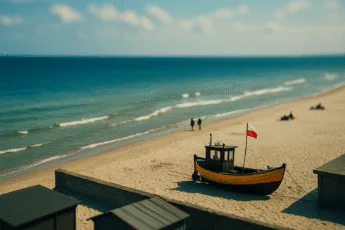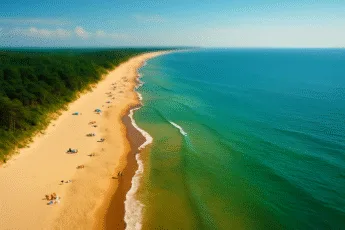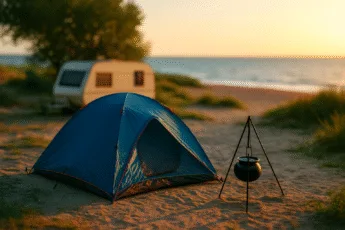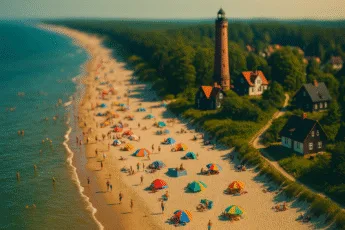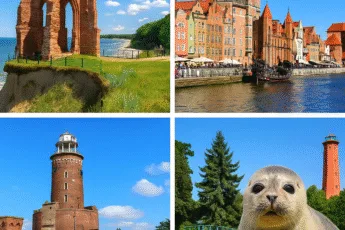Poland is full of surprising treasures that are waiting for discovery outside the beaten tourist trail. From the mysterious ruins of castles to the natural reserves hidden among forests, from picturesque villages to unusual engineering works - this amazing cultural and nature mosaic impresses on anyone who decides to get to know her. In this article we present nine little -known attractions of Poland that will delight every lover of history, nature and culture. These are places where history intertwines with modernity, where nature impresses with immeasurable beauty, and each step becomes an adventure.
We invite you to discover Poland that you don't know!
Wrong rocks - a rock maze in the Table Mountains
Incorrect rocks are one of the most unusual rock formations in Poland, located in the heart of the Table Mountains. This natural rock maze, created from sandstone, creates narrow corridors and crevices, through which you can squeeze, discovering secrets hidden in the heart of the mountains. A walk along a path about 1 km long is a real adventure that will take you into a world completely different from everyday life. Incorrect rocks are a great place for nature lovers and those who are looking for unusual attractions.
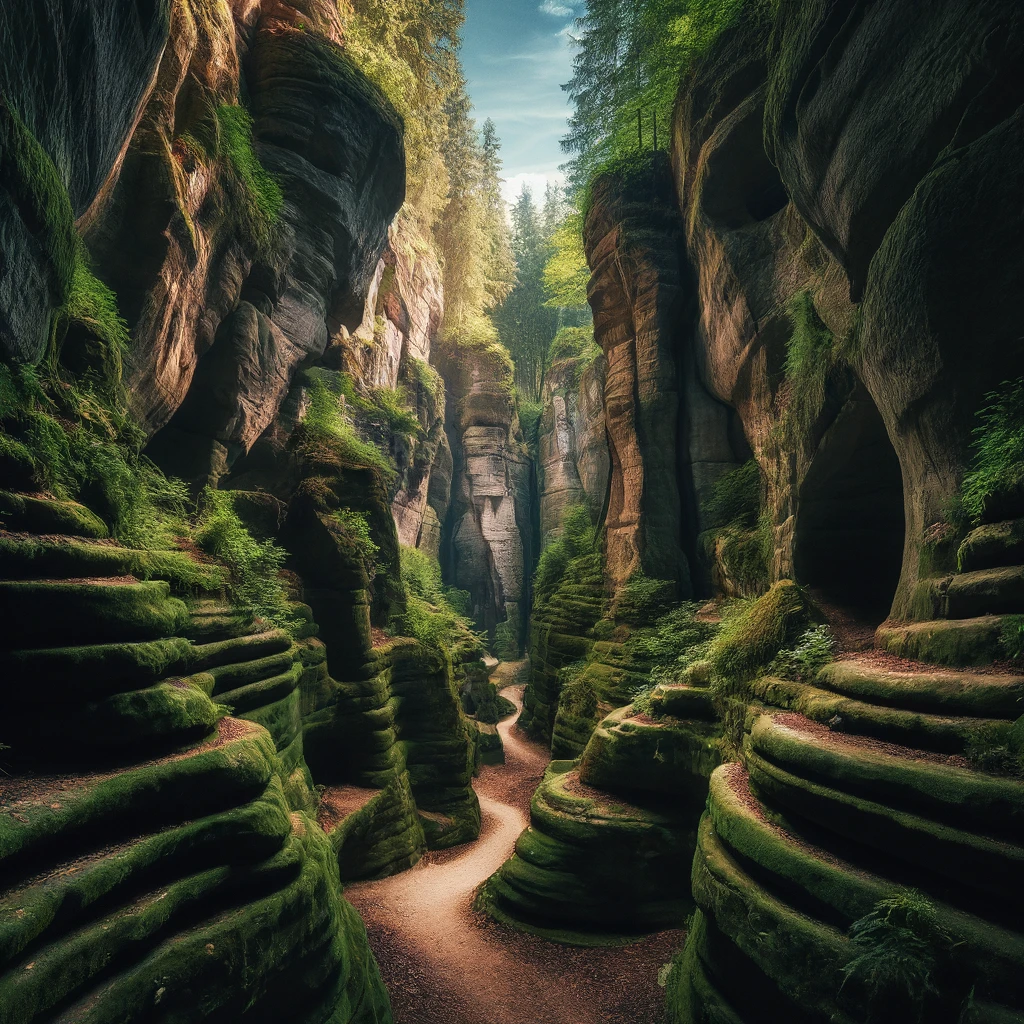
Chojnik Castle - ruins of the castle in Wysoka Góra in the Giant Mountains
At the top of the Chojnik Mountain, in the picturesque Giant Mountains, the majestic ruins of the Chojnik castle rose. This medieval fortress, built in the fourteenth century, witnessed many historical events. Today, the castle is a popular destination, offering not only insight into the rich history of the region, but also breathtaking views of the area. Climbing to the top, where the ruins are located, is the perfect adventure for anyone who values active rest surrounded by history.

Wolf's Life
Wolf's Lair, located in Gierłoż, is one of the most mysterious places from World War II in Poland. It was here that Adolf Hitler spent over 800 days, directing military operations on the eastern front. The complex of bunkers and shelters, built in a deep forest, was designed to withstand even the heaviest attacks. Today, the Wolf's Lair is open to visitors, offering a unique opportunity to see what the living conditions and work of the highest -ranking Nazi leaders looked like. This place is both a warning and a fascinating element of world history.

Park Mużakowski-Landscape Park on the Polish-German border
The Mużakowski Park, extending on the border of Poland and Germany, is one of the largest landscape parks in Central Europe and inscribed on the UNESCO World Heritage List. It covers an area of over 700 hectares and impresses with the diverse landscape and romantic English -style gardens. It is an ideal place for peaceful walks among historical buildings, picturesque bridges and various vegetation. The park is a unique example of the 19th century gardening art and is a great place to rest and photography.

Zalipie - a picturesque village with hand -painted houses
Zalpie, also known as a "painted village", is one of the most colorful and unusual places in Poland. The village is famous for the tradition of decorating houses, chapels and other buildings with hand -painted folklore designs. This unique form of folk art is passed down from generation to generation. Colorful floral motifs, which decorate the walls, windows and furniture, attract tourists from around the world, making Zalpie a unique place on the cultural map of Poland.

Sanctuary in Wejherowo - a baroque monastery complex with beautiful alleys
The Passion and Mary Sanctuary in Wejherowo is one of the most important sacred buildings in Pomerania. Established in the 17th century by Jakub Wejher, the sanctuary consists of a church, a monastery and cloisters, surrounded by picturesque Kalwary alleys. There are 26 chapels depicting scenes from the life of Christ and the Mother of God. This place of religious worship attracts pilgrims not only for spiritual reasons, but also because of its baroque architecture and beauty of nature, which perfectly blends with the spiritual atmosphere of this place.

Wooden churches in Lesser Poland - monuments inscribed on the UNESCO list
Wooden churches in Lesser Poland are a group of six Roman Catholic churches that represent the unique architectural style of medieval Europe. These historic buildings inscribed on the UNESCO heritage list are a great example of combining local building traditions with Gothic influences, which is rare on a global scale. These churches, made mainly of wood, delight with detail and artistic craftsmanship, and their interiors hide richly decorated polychrome and unique sculptural elements.

Natoperk nature reserve - one of the largest bats reserves in Europe
Natoperk nature reserve is one of the most important shelters in Europe for bats. Located in the Lubuskie Voivodeship, the reserve is part of the system of former German bunkers from World War II. This unusual location has been transformed into the place of protection and wintering of various species of bats. Bats are home to about 30,000 bats from 12 different species, which makes it one of the largest reserves of this type in Europe.

Elbląg Canal - a technological miracle with a unique ramp system
The Elbląg Canal, recognized as one of the seven wonders of Poland, is a unique example of engineering from the 19th century and is one of the most important monuments of technology in the country. This channel connects the river at various water levels using a ramp system, which allows boats to move on land on special prams. This is the only system of this type in Europe and one of the few in the world that is still in use, offering not only practical, but also picturesque shipping routes through the beautiful landscapes of Warmia and Mazury.

We hope that our list of nine unusual, little -known places in Poland inspired you to plan future trips. Each of these places offers unique experiences and unique memories that will remain with you for a long time. Poland is full of secrets to discover, and these less known attractions are a great way to experience something new.
Do not wait, start your adventure now and see what the less tourist side of Poland has from you!

